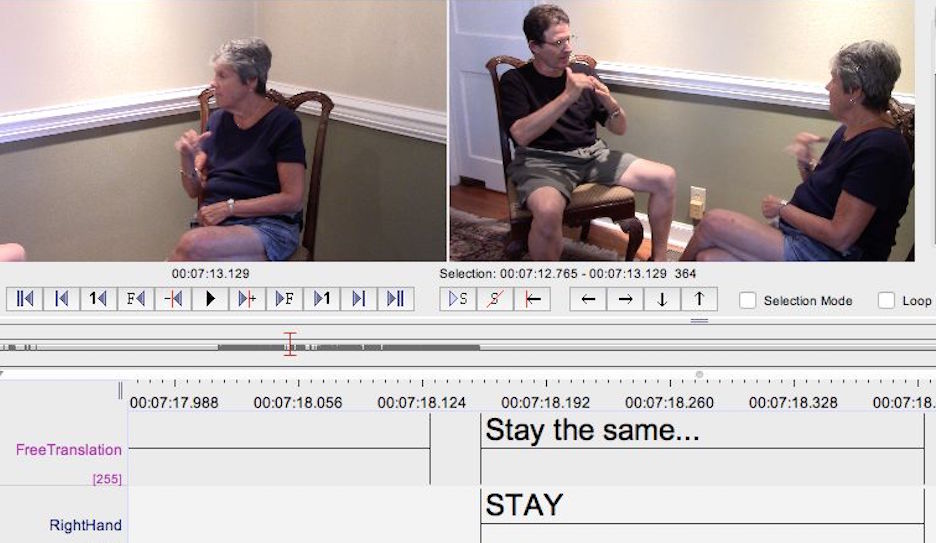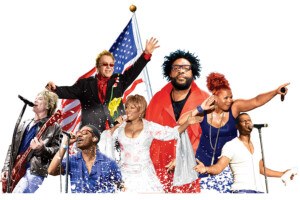Of Course There’s a Philadelphia Accent in American Sign Language

A sample of the program Fisher and Tamminga will use to annotate their interviews. Credit: University of Pennsylvania
When local writer JoAnna Loviglio described the Philadelphia accent for the Washington Post a couple years ago, she summed it up this way:
With apologies to comedian Jeff Foxworthy, you might be a Philadelphian if: you say beggle (bagel), wooder (water), tal (towel), beyoodeeful (beautiful), dennis (dentist) or Fit Shtreet (Fifth Street). Also, the name of your home town might sound like Philuffya, and you might call your football team the Iggles, you might pronounce “ferry” and “furry” the same way, and your rendering of “radiator” might rhyme with “gladiator.”
Native Philadelphians could surely add hundreds of examples to that list; personally, I was always dismayed by the way my relatives pronounced “egg” to rhyme with “plague.” And there are still words, like “hanger,” that trip me up on a regular basis because I can’t get the Philly out of them — those hoagie mouth remnants can be stubborn.
Given the singularity and staying power of the Philly accent, it should come as no surprise that a distinctly Philly accent is identifiable in American Sign Language as well. Penn’s Jami Fisher and Meredith Tamminga, who both work in the university’s linguistics department, are in the process of gathering data on this subject.
“In all sign languages,” says Fisher, “there are regional variations. But in the deaf community, Philadelphia has always been known anecdotally as very different.”
And it’s not necessarily appreciated; Fisher says the Philly variations are often mentioned as a pejorative in a way other regional variations are not. One example is the way ASL speakers in Philly sign “hospital” — it’s unlike the way that word is signed elsewhere. But Fisher says the differences seem to go beyond the lexical. “There may be foundational differences,” she says.
So how would an accent manifest in ASL? What does the equivalent of the sonorous Philly diphthong look like in ASL? Regional differences can be identified by what spoken-language speakers might call gestural variations: different hand shapes, different locations on the body, the way the palm is oriented, whether a person uses one hand or two hands for a sign, etc. Fisher and Tamminga will also look at word order, which is subject-verb-object in ASL. “We’re thinking that may be different in the Philadelphia ASL accent.”
Fisher and Tamminga want to elicit naturalistic data not just for research but also to benefit the deaf community. “We want to make sure we preserve the history and preserve whatever this accent is,” says Fisher, who adds that as with spoken English, the ASL Philly accent is changing and even disappearing. They’ll do this by recording video interviews with 12 members of Philadelphia’s deaf community and then annotate the videos to display the way the accent infuses the language.
Follow @lspikol on Twitter.


